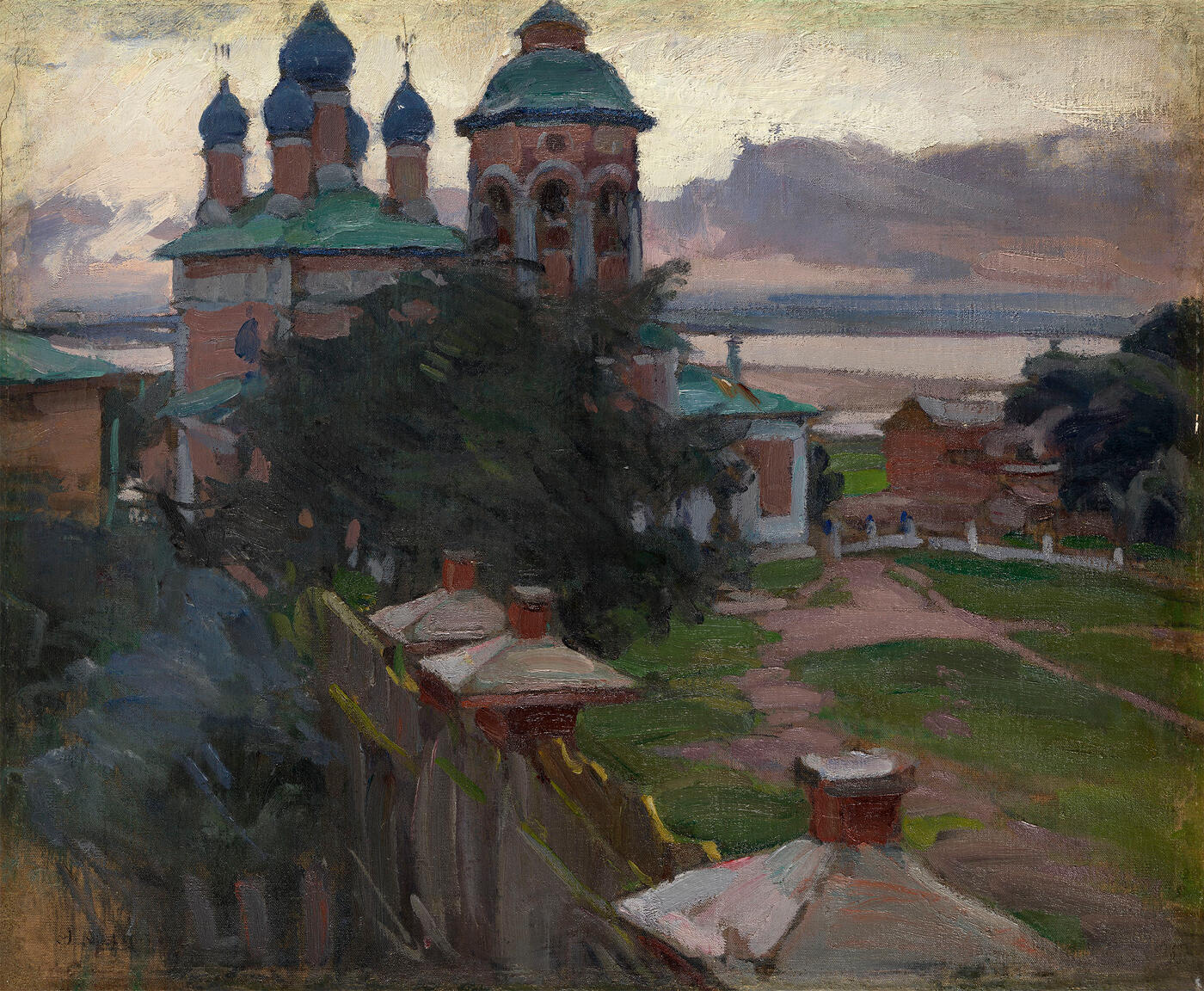25 - 28 November 2012 Russian Art Auctions
25 November 2012

22. ARKHIPOV, ABRAM (1862–1930)
Murom, signed.
Oil on canvas, 74 by 89 cm.
160,000–200,000 GBP
Executed c. 1910.
Provenance: Collection of K.F. Arning, Moscow.
Private collection, Europe.
Authenticity of the work has been confirmed by the expert V. Petrov.
Exhibited: Abram Efimovich Arkhipov, Moscow, 1949.
Literature: Exhibition catalogue, Abram Efimovich Arkhipov, Moscow, 1949, p. 17, listed as being in the collection of K.F. Arning.
O. Zhivova, Abram Efimovich Arkhipov, Moscow, Sovetskii khudozhnik, 1959, p. 80, illustrated; p. 117, listed.
A new facet to the creative talent of Russian Itinerant Abram Arkhipov is revealed in his landscapes from the first decade of the 20th century. The artist’s many trips to the North and the Oka river, in the Vladimir province he so loved, enabled him to paint a whole series of remarkable canvasses between 1900 and the early years of the following decade, turning him from a genre painter, well known from exhibitions in the 1890s, into a no less celebrated landscapist.
Murom is one of the gems in this series of landscapes. The viewer is confronted, in the light of a cool day in August, by the massive shape of the church of St Nicholas on the Embankment or, as the inhabitants of Murom themselves called it, Nicholas the Wet. The church had been built between 1700 and 1717 by the priest Dmitri Christophorov in memory of his father, and paid for with his own money. The imposing, crisp silhouette of the church, with the deliberately truncated spire of its bell-tower and cross on its central cupola, imparts to the carefully considered composition the impressionist illusion of being unintended and accidental. An uncluttered foreground means that the massive church with its five cupolas and belltower looming high over the Oka can be contemplated from afar, against a background of broad, distant stretches of river. This is also helped by the choice of an aerial viewpoint. The picture is painted loosely and with verve: its rich plein air colouration is built on fine gradations of greyish pink and green. In the foreground, bushy thickets darkened by rain are rendered in long, fluent brush strokes of a brighter green. These, together with the damp clay of the earth and the dense low clouds in the sky, allowed Arkhipov to create an almost physical sensation of bodily weight in these painted shapes, and to convey the mood that permeates nature in middle Russia as her short summer retreats into chilly days. The lyricism that characterises a number of the artist’s early genre and landscape works resonates no less strongly in this painting.
Visitors to the exhibitions in which Arkhipov’s landscapes of the 1900s were shown invariably remarked that his work “seemed French – such bright colours, such carefree virtuoso brushwork”. The origins, however, of Arkhipov’s broad brushstrokes and feeling for colour should be sought rather in the work of Vasily Polenov and Anders Zorn, who drew the admiration, as they experimented and learned from each other, of Arkhipov’s closest colleagues – Konstantin Korovin, Mikhail Nesterov and Isaak Levitan.
The artist immerses the outskirts of Murom in the tone of the everyday. The neat rustic fence and the deeply provincial daytime absence of people convey the authentic atmosphere of life in this old town. It seems as though time here has stopped and nothing will ever change. It comes as no surprise that, when Olga Zhivova wrote her monograph devoted to Arkhipov in 1959, this image of Murom that he painted at the end of his “landscape period” was used to exemplify the artist’s highest creative achievements in the years 1910–1920.
Notes on symbols:
* Indicates 5% Import Duty Charge applies.
Ω Indicates 20% Import Duty Charge applies.
§ Indicates Artist's Resale Right applies.
† Indicates Standard VAT scheme applies, and the rate of 20% VAT will be charged on both hammer price and premium.